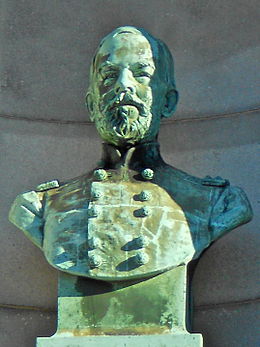General James Beaver
Stolen bust of Civil War general found under I-95
Updated: AUGUST 25, 2017 — 7:13 PM EDT
by Martha Woodall, Staff Writer @marwooda | martha.woodall@phillynews.com
Link to article in Philly.com
Philadelphia police on Friday were investigating the theft of a bust of a Civil War general that was later found under an I-95 bridge in South Philadelphia near FDR Park.
Fairmount Park officials said they believe the bust of Gen. James A. Beaver was stolen from the Smith Memorial Arch in West Fairmount Park late Thursday night.
The bronze bust was found by a police officer early Friday, said Alain Joinville, a spokesman for Parks and Recreation.
“Vandalism and theft are illegal, and people who commit these crimes will be treated accordingly,” Joinville said, adding that the staff has “retrieved the statue, and we’ll assess whether any conservation is needed.”
Beaver was a general in the Union Army. Officials do not know whether the removal of his bust was connected to the current controversy over whether the statues of Confederate officers and depictions of others with racist views should be removed.
A native of Perry County, Beaver commanded the 148th Pennsylvania Volunteers and later became the state’s 20th governor.
During his term from 1887-91, Beaver was credited with obtaining state funds to improve Penn State’s football field. Beaver Stadium is named in his honor, and a tablet bearing his likeness is in the southeast corner of the stadium.
The Smith Memorial Arch was created to honor Pennsylvania’s Civil War heroes. Located near the near the Please Touch Museum, the memorial has two tall columns supported by curving arches, and adorned with portrait sculptures including two equestrians statues, three figures and 8 busts. Beaver’s bus was installed in 1912.
Joinville said the memorial is owned by the Smith Memorial Trust. The estate of Richard and Sarah Smith established the creation of Smith Memorial Playground & Playhouse, in East Fairmount Park.











